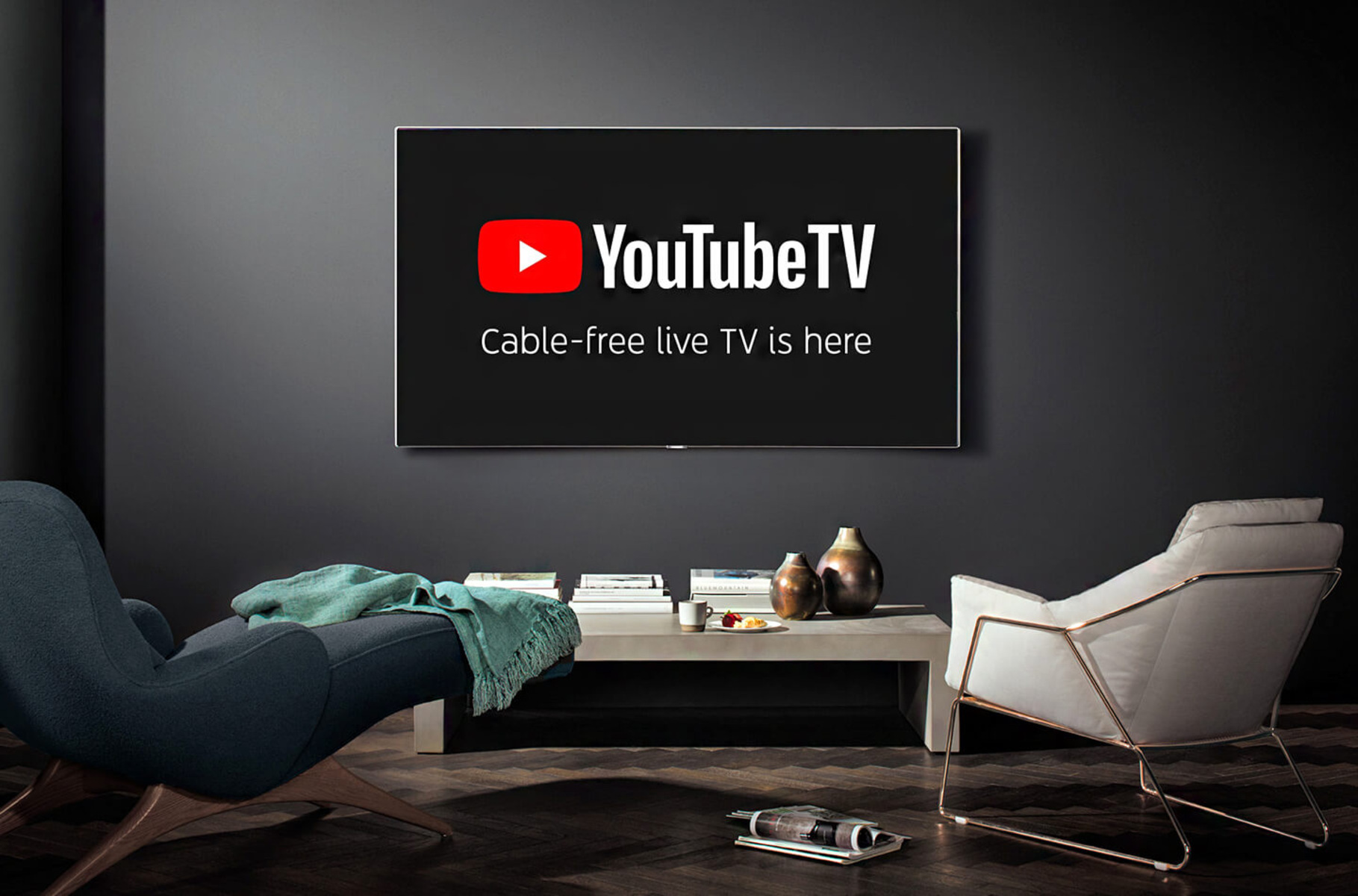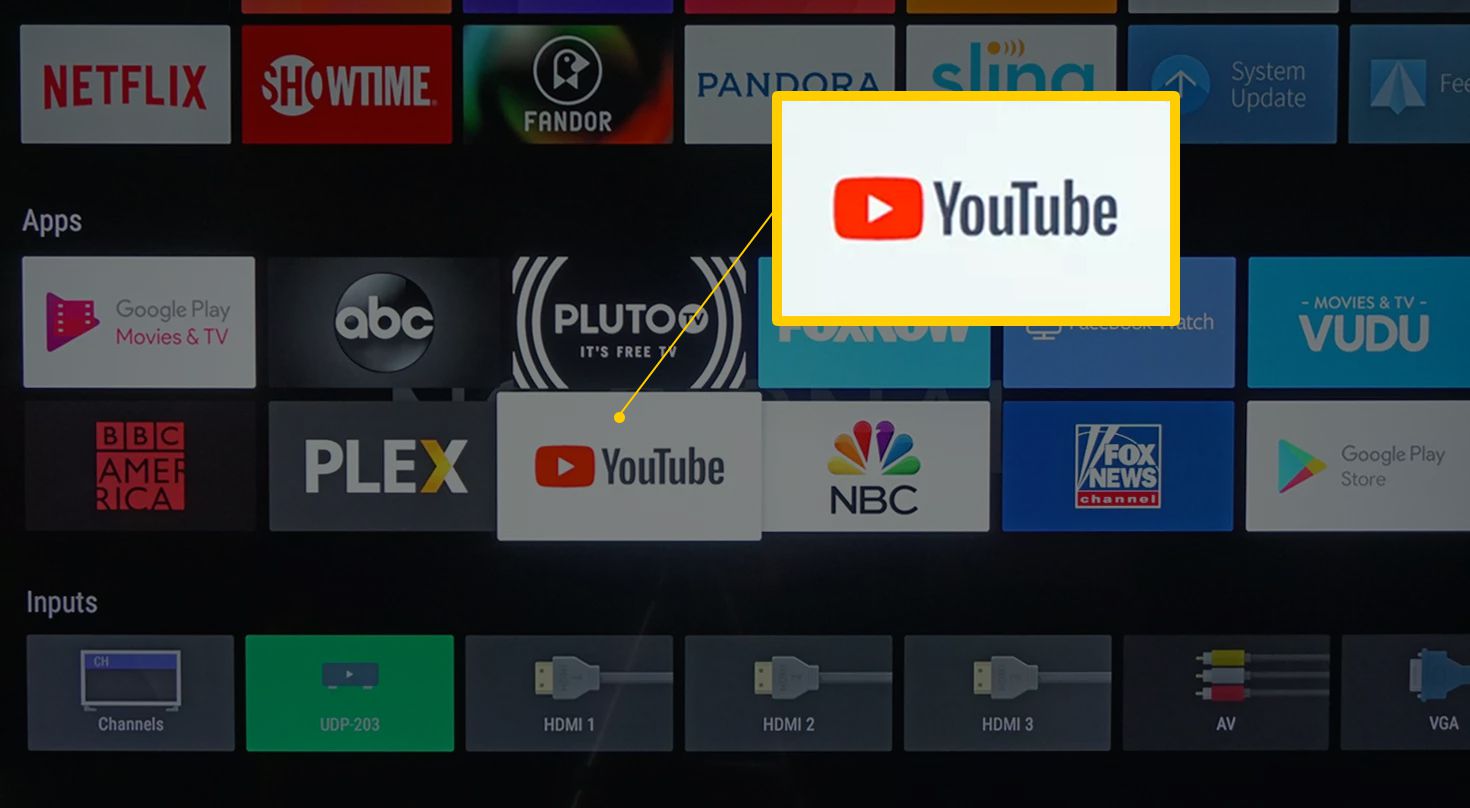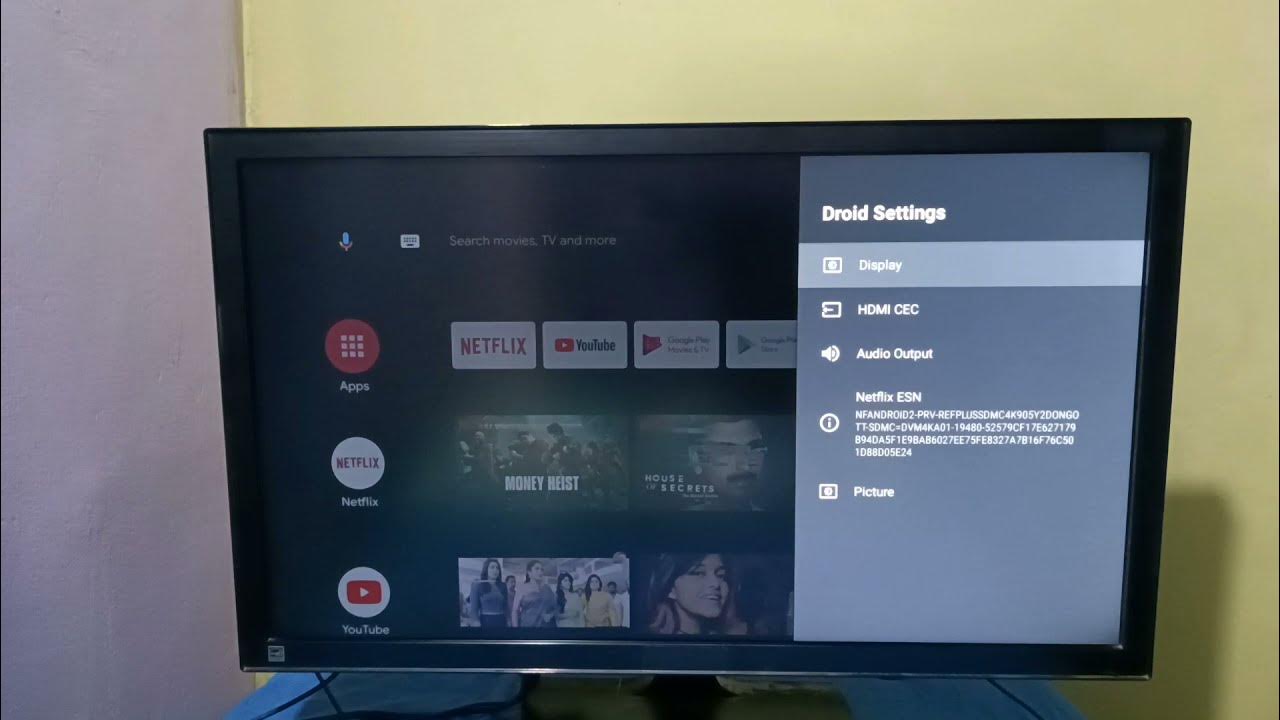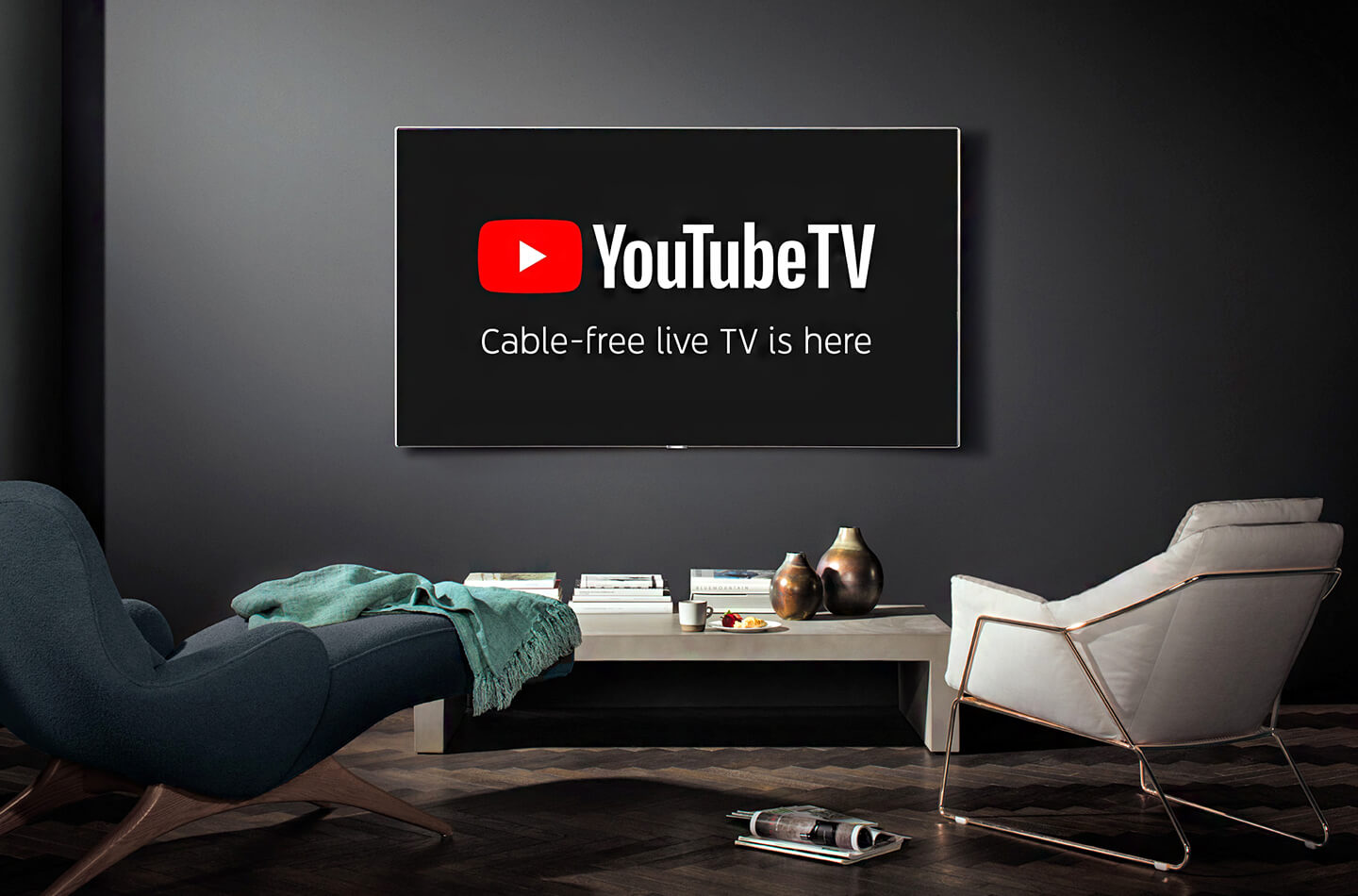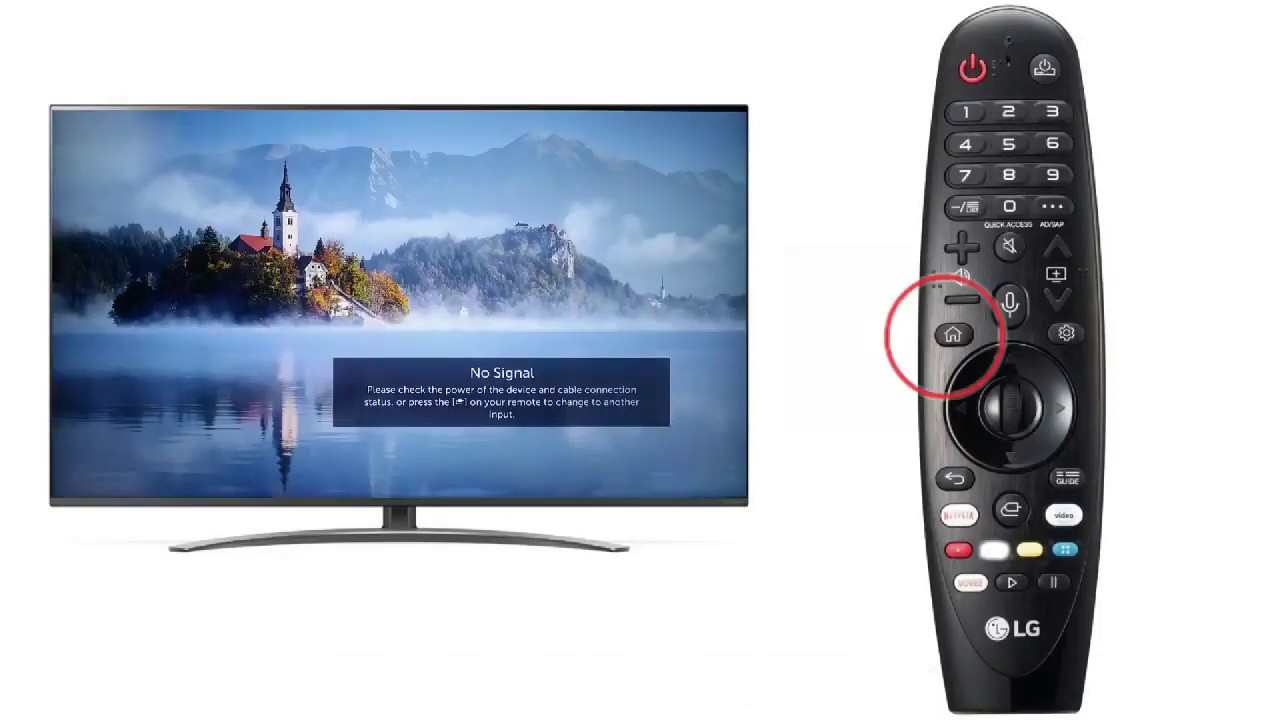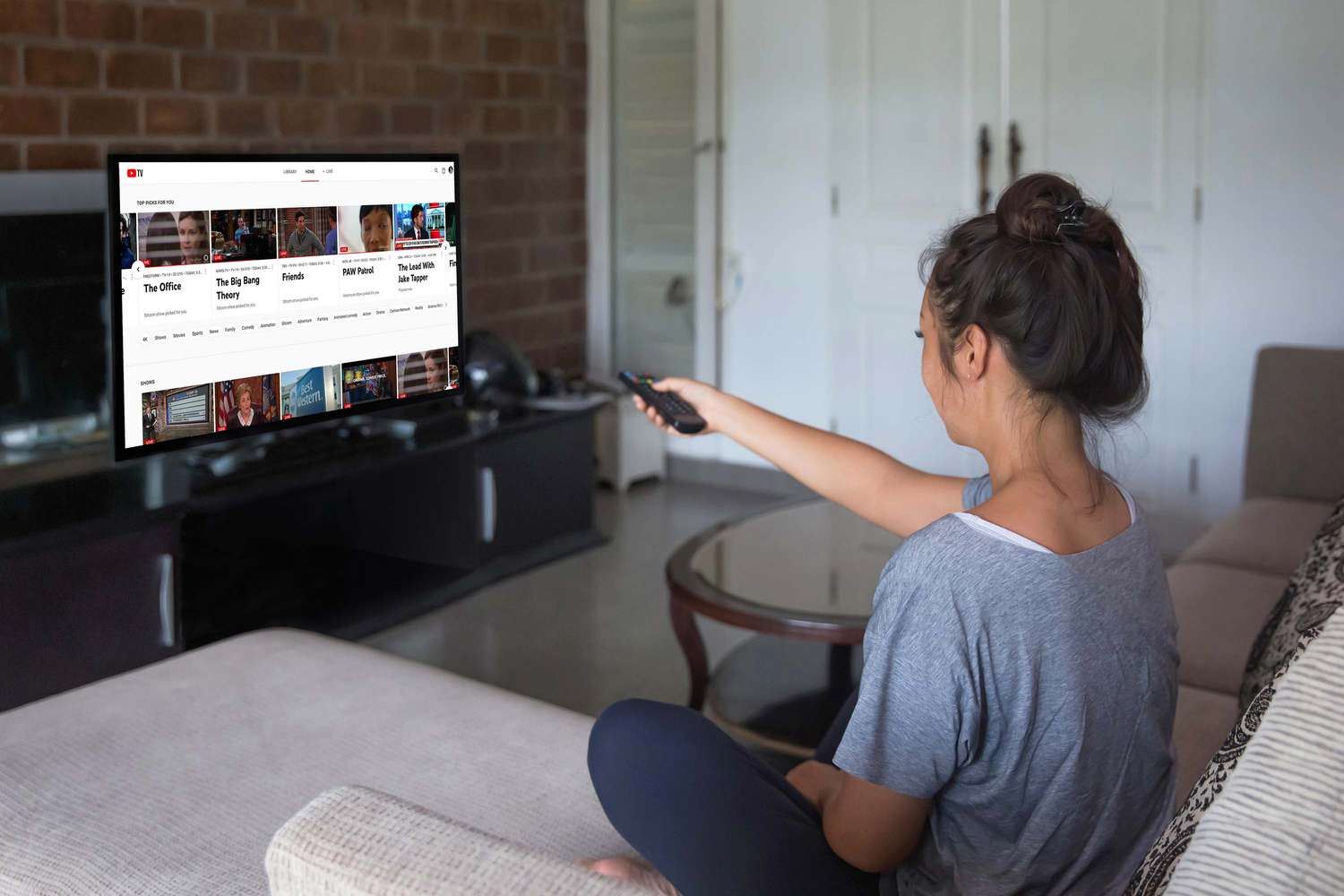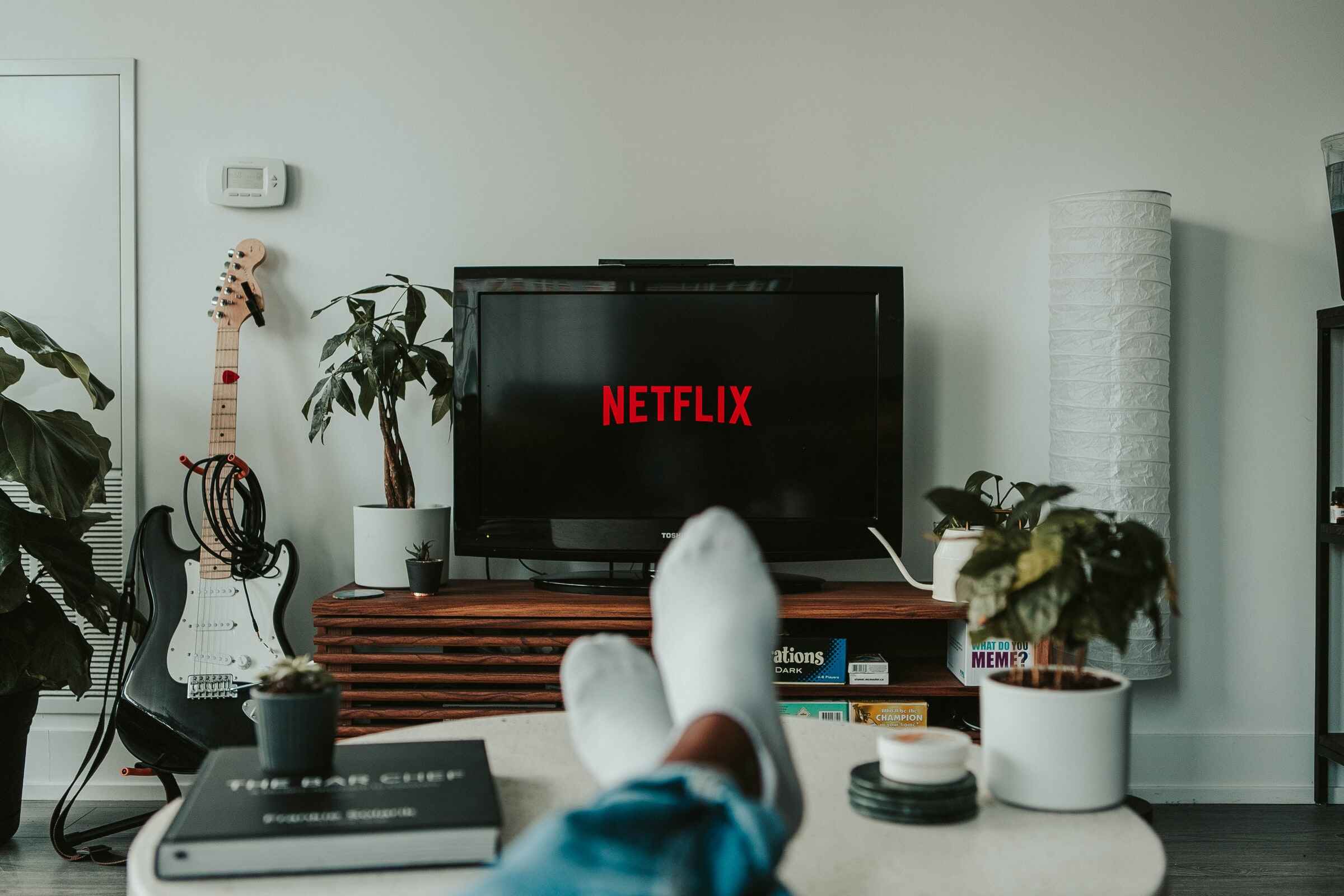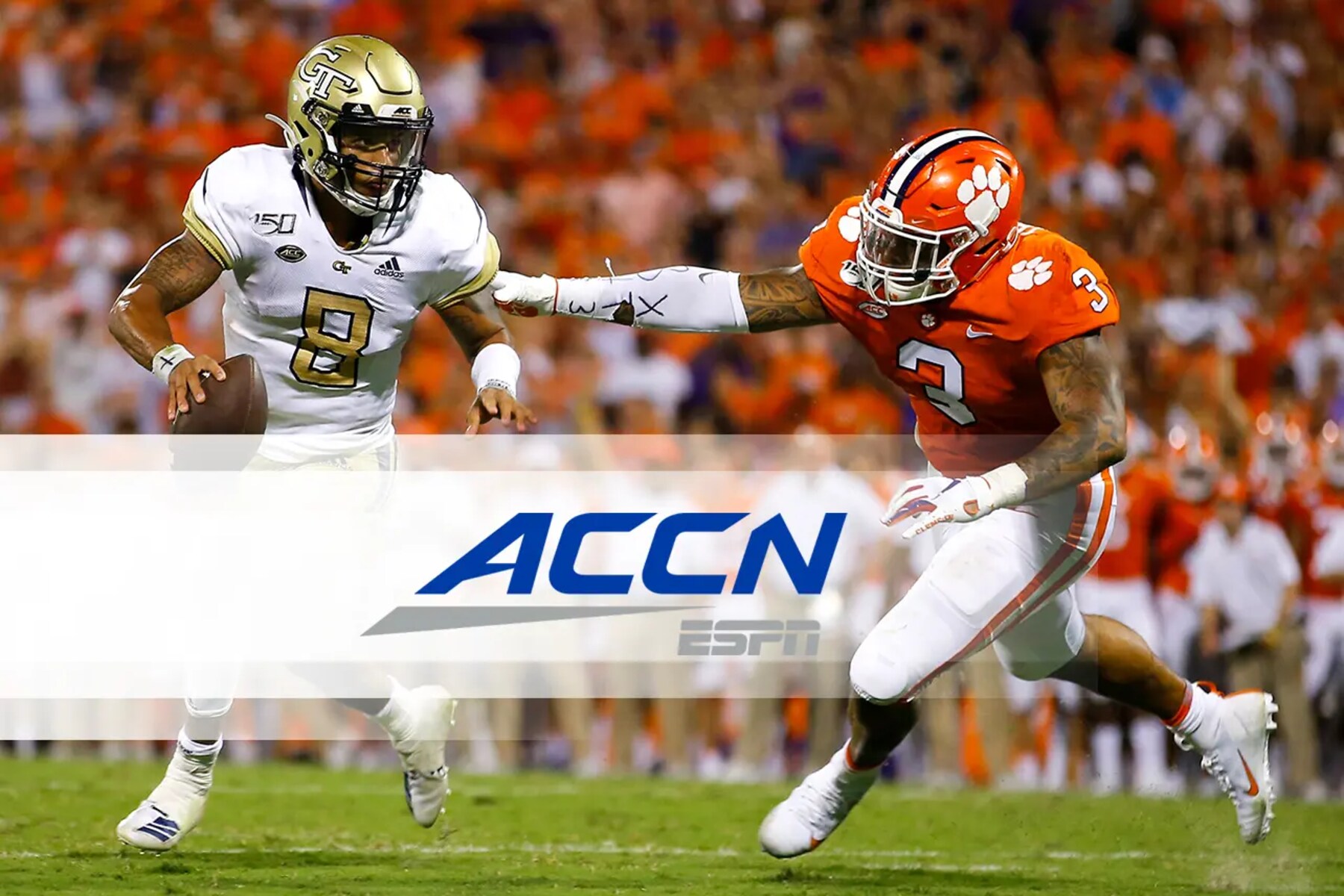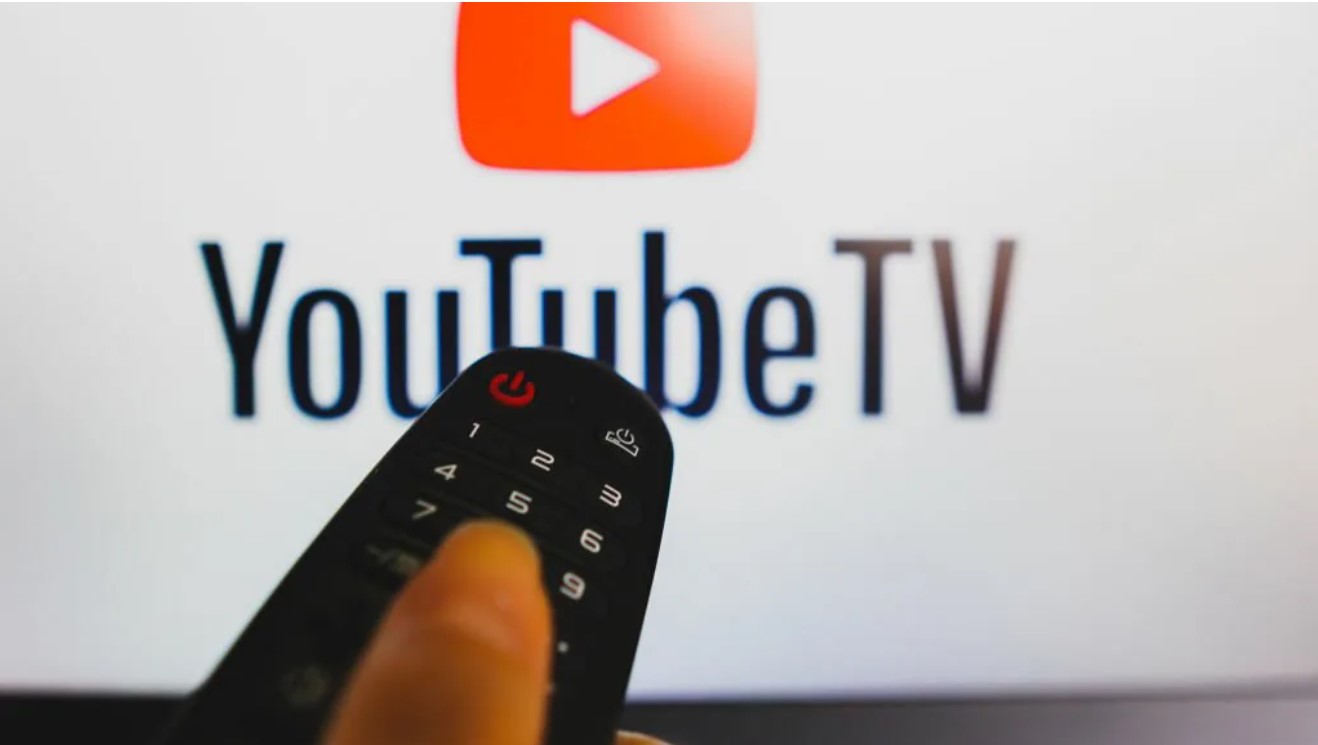Introduction
With billions of videos available at your fingertips, YouTube has become the go-to platform for entertainment, education, and everything in between. While watching YouTube videos on your computer or smartphone is convenient, sometimes you may want to enjoy them on a bigger screen, such as your TV. Luckily, there are several ways to watch YouTube on your TV and transform your living room into a personal cinema.
In this article, we will explore various methods to connect your TV to YouTube, whether through smart TVs, streaming devices, or casting from your phone or computer. Additionally, we will delve into navigating the YouTube app on your TV and highlight the benefits of using YouTube TV or YouTube Premium. Lastly, we will provide troubleshooting tips to address any common issues you may encounter during the setup process.
Before diving into the different methods, it’s important to ensure that your TV is connected to the internet. Most modern TVs come equipped with built-in Wi-Fi capabilities, but older models may require an ethernet cable connection. Make sure your TV is connected to your home network before proceeding with the following steps.
So, if you’re ready to elevate your YouTube watching experience and enjoy your favorite videos on the big screen, let’s explore the various options available to connect YouTube to your TV.
Connecting Your TV to the Internet
Before you can start watching YouTube on your TV, you’ll need to connect your TV to the internet. Most modern TVs offer multiple methods for internet connectivity, so you can choose the one that suits your setup. Here are the primary methods for connecting your TV to the internet:
- Wi-Fi: If your TV has built-in Wi-Fi capabilities, you can easily connect it to your home network wirelessly. Simply go to the settings menu on your TV, select the Wi-Fi option, and follow the on-screen instructions to connect to your network. Make sure you have the correct Wi-Fi password handy.
- Ethernet Cable: Some older TVs may not have built-in Wi-Fi, but they often come with an Ethernet port. To connect your TV to the internet using an Ethernet cable, locate the Ethernet port on the back of your TV and connect one end of the cable to the port and the other end to your router. This wired connection provides a stable and reliable internet connection.
- Wireless Bridge: If your TV doesn’t have built-in Wi-Fi capabilities and you prefer not to use an Ethernet cable, you can utilize a wireless bridge. A wireless bridge connects to your TV via an Ethernet cable and wirelessly connects to your home network, providing internet access to your TV. Simply connect one end of the Ethernet cable to the wireless bridge and the other end to your TV.
- Powerline Adapters: Another option for connecting your TV to the internet is through powerline adapters. Powerline adapters utilize your home’s electrical wiring to transmit internet signals. To use powerline adapters, plug one adapter into an electrical outlet near your router and connect it to your router using an Ethernet cable. Then, plug another adapter into an outlet near your TV and connect it to your TV using an Ethernet cable. This effectively extends your network connection from your router to your TV.
Once you have successfully connected your TV to the internet, you’re ready to embark on the journey of watching YouTube on your TV. In the following sections, we will explore different methods and devices that allow you to access YouTube content on the big screen.
Using Smart TVs
If you have a smart TV, accessing YouTube is often as simple as launching the app and signing in to your account. Smart TVs have built-in internet connectivity and come equipped with pre-installed apps, including YouTube. Here’s how you can use your smart TV to watch YouTube:
- Launch the YouTube app: On your smart TV’s home screen or app menu, locate the YouTube app and select it. The app may have a distinct YouTube logo or can be found under the ‘Video’ or ‘Entertainment’ category.
- Sign in to your YouTube account: If you have a YouTube account, sign in using your credentials. This allows you to access your subscriptions, playlists, and personalized recommendations.
- Search and browse YouTube content: Once signed in, you can use the remote control or a smart TV keyboard to search for specific videos, channels, or topics. You can also browse through popular videos, trending content, and recommended videos based on your viewing history.
- Play and enjoy videos: When you find a video you want to watch, select it to start playing. You can adjust the volume, playback settings, and video quality using the TV’s remote control. Some smart TVs even offer voice control functionality, allowing you to interact with YouTube using voice commands.
- Subscribe and interact: If you come across a channel you enjoy, you can subscribe to it directly from the app. Subscribing to a channel ensures that you receive notifications for new uploads. You can also like, comment on, and share videos with your friends and family.
Smart TVs provide a convenient and seamless way to enjoy YouTube on your TV without the need for any additional devices. However, the user experience and available features may vary depending on the brand and model of your smart TV. Some smart TVs also support other streaming platforms, such as Netflix, Hulu, and Amazon Prime Video, giving you access to a wide range of content in one place.
Now that you know how to use your smart TV to watch YouTube, let’s explore alternative methods for streaming YouTube content on your TV using streaming devices.
Using Streaming Devices
If you don’t have a smart TV or prefer a more versatile streaming experience, you can use streaming devices to access YouTube on your TV. Streaming devices are external devices that connect to your TV and provide access to a wide range of online content, including YouTube. Here are some popular streaming devices you can use:
- Google Chromecast: Chromecast is a small dongle that plugs into your TV’s HDMI port. Once connected, you can use your smartphone, tablet, or computer as a remote control to cast YouTube videos from your device to the TV. Simply open the YouTube app on your device and look for the cast button to send the video to your TV.
- Roku Streaming Stick: Roku is a popular streaming device that offers various models and options. With a Roku Streaming Stick, you can navigate the Roku interface on your TV and download the YouTube app from the Roku Channel Store. Once installed, you can access YouTube and enjoy your favorite videos on the big screen.
- Amazon Fire TV Stick: If you are an Amazon Prime member or prefer the Amazon ecosystem, the Amazon Fire TV Stick is a great option. It connects to your TV via HDMI and gives you access to a wide range of streaming apps, including YouTube. You can download the YouTube app from the Amazon Appstore and start watching YouTube videos on your TV.
- Apple TV: Apple TV is a streaming device specifically designed for Apple users. It allows you to access various streaming apps, including YouTube. Simply download the YouTube app from the App Store and sign in to your YouTube account to enjoy videos on your TV. Apple TV also supports features like AirPlay, which allows you to cast YouTube videos from your iPhone, iPad, or Mac directly to the TV.
These are just a few examples of popular streaming devices available in the market. Each device has its own set of features, user interface, and compatibility. By connecting a streaming device to your TV, you can enjoy not only YouTube but also other streaming services and apps, making your TV a hub for all your entertainment needs.
In the next section, we will explore how you can cast YouTube videos from your phone or computer to your TV, giving you even more flexibility and control over your YouTube viewing experience.
Casting YouTube from Your Phone or Computer
If you want to watch YouTube videos on your TV without any additional devices, you can use the casting feature available on many smart TVs or streaming devices. Casting allows you to send YouTube videos from your phone or computer to your TV screen wirelessly. Here’s how you can cast YouTube from your phone or computer:
- Ensure your TV and casting device are on the same Wi-Fi network: Both your TV and the device you want to cast from should be connected to the same Wi-Fi network. This is necessary for them to communicate with each other.
- Open the YouTube app on your phone or computer: Launch the YouTube app on your device or visit the YouTube website in your web browser.
- Look for the cast icon: In the YouTube app or on the YouTube website, look for the cast icon. It usually appears as a rectangle with a Wi-Fi signal in the bottom left or right corner. Tap or click on the cast icon.
- Select your TV: A list of available devices will appear on your phone or computer screen. Choose your TV from the list to establish the connection.
- Play the video: Once the casting connection is made, select a YouTube video to play on your phone or computer. The video will automatically start playing on your TV screen.
- Control playback from your device: While the video is playing on your TV, you can use your phone or computer as a remote control. You can pause, play, adjust the volume, and even browse for other videos without interrupting the playback on the TV.
Casting allows you to enjoy YouTube videos on your TV using the familiar interface of your phone or computer. It’s a convenient option when you want to share videos with friends and family or simply prefer the convenience of controlling playback from your handheld device.
Next, let’s explore how to navigate the YouTube app on your TV and make the most out of your viewing experience.
Navigating the YouTube App on Your TV
Once you have successfully launched the YouTube app on your TV, it’s important to familiarize yourself with the various features and navigation options. Understanding how to navigate the YouTube app will enhance your viewing experience and allow you to discover new content effortlessly. Here are some tips for navigating the YouTube app on your TV:
- Home Screen: The home screen of the YouTube app on your TV is often the first thing you’ll see when you open the app. It displays recommended videos based on your watch history and preferences. Navigate through the recommended videos, trending content, or personalized playlists to find something that interests you.
- Search: Use the search function within the YouTube app to find specific videos, channels, or topics. You can access the search bar either through the home screen or by using the designated button on your TV remote control. Enter keywords or phrases and browse through the search results to find the content you’re looking for.
- Subscriptions: If you have subscribed to any YouTube channels, the subscriptions tab will display the latest videos from those channels. This allows you to easily access updates from your favorite creators and catch up on their content directly from the YouTube app on your TV.
- Playlists and History: The YouTube app on your TV also provides access to your saved playlists and watch history. You can navigate through your playlists and continue watching videos where you left off. This feature ensures you can pick up where you left off across different devices.
- Settings: In the settings menu of the YouTube app, you can customize various aspects of your viewing experience. You can adjust playback settings, manage closed captions, enable or disable autoplay, and customize other preferences according to your liking.
- Recommended Videos: As you watch videos on the YouTube app, the algorithm learns your preferences and offers personalized recommendations. Explore the recommended videos section to discover new content that aligns with your interests. This is a great way to find hidden gems and diversify your YouTube viewing experience.
Each TV’s YouTube app may have slight variations in terms of layout and features, but the core functionality remains the same. Spend some time exploring the YouTube app on your TV, and you’ll soon become familiar with its navigation and features.
Now that you know how to navigate the YouTube app on your TV, let’s explore the options of using YouTube TV or YouTube Premium for an enhanced and ad-free experience.
Using YouTube TV or YouTube Premium
If you’re looking for an enhanced viewing experience on YouTube and additional features, you may consider subscribing to YouTube TV or YouTube Premium. These subscription-based services offer extra benefits that can enhance your YouTube experience on your TV:
YouTube TV:
YouTube TV is a live TV streaming service that provides access to both live and on-demand content from various channels. With YouTube TV, you can watch live sports, news, shows, and other entertainment on your TV. Here are some key features of YouTube TV:
- Live TV Channels: YouTube TV offers a wide selection of live TV channels, including major broadcast networks, sports channels, and cable networks. You can access these channels on your TV and watch live content as it airs.
- Cloud DVR: YouTube TV includes a cloud DVR feature, allowing you to record live TV and access your recordings later. This is particularly useful if you want to watch a show or game that you might miss while it’s live.
- Multiple Devices: With a YouTube TV subscription, you can stream content on multiple devices simultaneously. This means that you can watch YouTube TV on your TV while someone else in your household watches on their phone or tablet.
- Originals and On-Demand: Besides live TV, YouTube TV gives you access to on-demand content and YouTube Originals. This expands your options for entertainment and lets you enjoy exclusive content created by YouTube.
YouTube Premium:
If you prefer an ad-free experience and want access to exclusive YouTube Originals, YouTube Premium might be the right choice for you. Here are the features you can enjoy with a YouTube Premium subscription:
- Ad-Free Viewing: With YouTube Premium, you can watch YouTube videos without any interruptions from ads. This enhances your viewing experience and allows you to enjoy your favorite videos seamlessly.
- Background and Offline Play: YouTube Premium enables background play, meaning you can continue listening to videos even when you switch to other apps or lock your phone. Additionally, you can download videos to your device and watch them offline, which is perfect for travelers or those with limited internet connectivity.
- Exclusive Originals: YouTube Premium gives you access to a growing library of original content produced by YouTube. From scripted series to reality shows and documentaries, there’s a wide range of exclusive content available for your viewing pleasure.
- YouTube Music Premium: As part of a YouTube Premium subscription, you also gain access to YouTube Music Premium. This allows you to listen to music ad-free, download songs for offline listening, and enjoy background play while using other apps or when your device’s screen is off.
Subscribing to YouTube TV or YouTube Premium enhances your YouTube experience by providing additional features, convenience, and access to exclusive content. Consider your preferences and needs to determine which of these services, if any, align with your viewing habits.
Now that you’ve learned about YouTube TV and YouTube Premium, it’s important to be aware of potential issues and how to troubleshoot them. In the next section, we’ll explore some common issues you may encounter and provide solutions to help you overcome them.
Troubleshooting Common Issues
While watching YouTube on your TV, you may encounter some common issues that can disrupt your viewing experience. Here are a few troubleshooting tips to help you overcome these issues:
- Buffering or Slow Playback: If you experience buffering or slow playback, it could be due to a poor internet connection. Check your internet connection speed and ensure that it meets the recommended requirements for streaming videos. You can also try restarting your router or moving your TV closer to the Wi-Fi router to improve the signal strength.
- Playback Errors: If you encounter playback errors, such as videos not loading or constantly buffering, try refreshing the YouTube app on your TV. This can often resolve temporary issues. If the problem persists, check for any available software updates for your TV or streaming device and install them. Updating the app or device’s firmware can fix bugs and improve overall performance.
- Sign-In Issues: If you have trouble signing in to your YouTube account or the app keeps signing you out, double-check your username and password. Ensure that you are entering the correct credentials. If the problem persists, try signing out of the app, restarting your TV or streaming device, and then signing back in. Clearing the cache and data of the YouTube app on your TV may also resolve sign-in issues.
- Audio or Video Sync Problems: If you notice audio and video synchronization issues, it could be due to a delay in the TV’s processing. Try adjusting the audio sync settings, if available, on your TV or streaming device. Look for an audio delay or lip-sync option in the settings menu and make necessary adjustments until the audio and video are in sync.
- Missing or Unresponsive Features: If you find that certain features or buttons within the YouTube app are missing or unresponsive, it could be due to an outdated app version. Make sure you have the latest version of the YouTube app installed on your TV or streaming device. If the issue persists, consider uninstalling and reinstalling the app.
If none of these troubleshooting tips solve the issue, consult the user manual or the manufacturer’s support website for your TV or streaming device. They may have specific troubleshooting steps or customer support options to help you with any persistent issues.
By addressing common issues and resolving them promptly, you can ensure a smooth and enjoyable YouTube viewing experience on your TV.
Now that you have the knowledge to troubleshoot common issues, it’s time to summarize and wrap up the key takeaways from this article. * Append the next sentence to the latest sentence*
Conclusion
Watching YouTube on your TV opens up a world of entertainment, education, and limitless content. Whether you have a smart TV, a streaming device, or the ability to cast from your phone or computer, there are various options available to enjoy YouTube on the big screen.
In this article, we explored the different methods of connecting your TV to the internet, including Wi-Fi, Ethernet, wireless bridges, and powerline adapters. We also discussed using smart TVs and the convenience they bring, as well as the versatility of streaming devices like Chromecast, Roku, Amazon Fire TV Stick, and Apple TV.
We learned how to navigate the YouTube app on your TV, search for videos, access subscriptions, and explore recommended content. Additionally, we explored the benefits of using YouTube TV or YouTube Premium for an enhanced viewing experience, and we addressed common issues and provided troubleshooting tips to overcome them.
Now it’s time for you to choose the method that best suits your preferences and set up YouTube on your TV. Whether you want to watch live TV, enjoy ad-free content, or simply indulge in your favorite YouTube videos on a larger screen, the possibilities are endless.
So grab your remote control, connect your TV to the internet, and immerse yourself in a world of captivating videos right from the comfort of your living room. Happy YouTube streaming!







